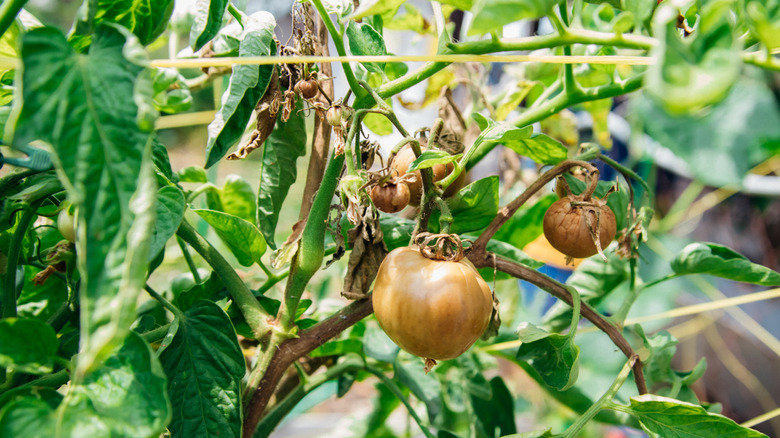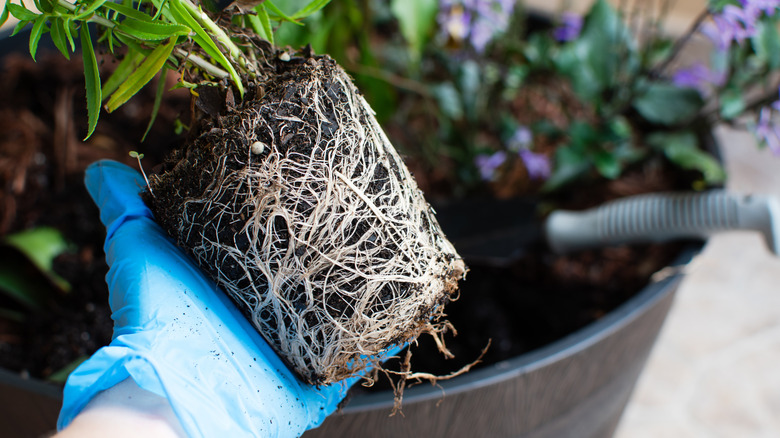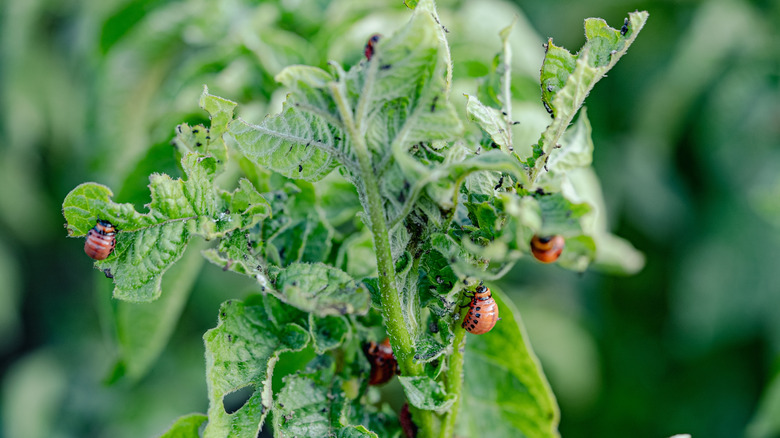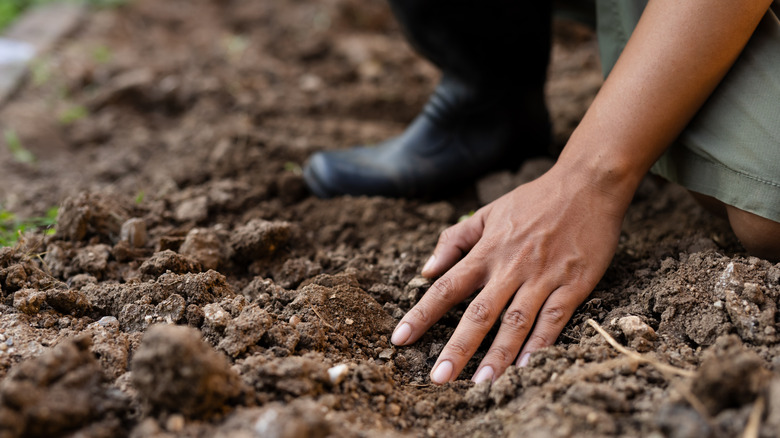
You want to know my secret trick to calm down after a busy day in the office? Gardening. It completely drains my mind from the worries of the day, and as a chef, there is nothing more rewarding than cooking with ingredients I've grown from my garden. During my time at culinary school in Italy, my classmates and I had exceptional opportunities to deepen our understanding of the food industry through an Italian lens. We engaged in hands-on activities ranging from curing prosciutto and making fresh pasta to managing a small farm that produced vegetables, fruit, meat, and dairy products for our classes.
Among all these experiences, I developed a particular passion for cultivating tomato plants. Our Tuscany campus grew over ten tomato varieties, which, of course, we harvested and incorporated into dishes throughout the year. These experiences equipped me with valuable insights into which tomato plants are worth purchasing and which ones to avoid. Use this list as your guide when shopping around at your local garden store, and if you notice any of these six red flags, you might want to run for the hills.
Read more: 15 Best Things To Plant Alongside Your Tomatoes
Yellow or Wilting Leaves

You've probably been there before: you've just cleaned out your entire yard and fertilized the soil with nutrients for weeks. You head to your local garden center, and all you find are tomato plants with yellow and wilting leaves. You think to yourself, "Did I wait too long to plant? Is the season already over?" Don't worry, this isn't on you. Yellow or wilting leaves constitute a significant indicator that the tomato plant is riddled with issues.
Often, the culprit behind yellow leaves is overwatering, which suffocates the roots by depriving them of oxygen. On the other hand, underwatering can also cause the plant to stress and wilt its leaves. Be sure to avoid any tomato plant with widespread yellowing, especially if leaves are drooping or have brown patches. Look for one with bright green leaves and a firm, sturdy stem. If your only option is a tomato with yellow leaves, then try removing any affected leaves and plant debris. You can ensure it has good air circulation by pruning any unhealthy stems or roots, and only water at its base.
Visible Spots and Blight

If you live in a cool, humid, or moist climate, then it's highly likely that you'll find tomato plants that are riddled with visible spots and blight. Anytime you're shopping around, be on the lookout for dark spots, white powdery substance, or unusual discoloration on leaves and stems. These are usually the signs of fungal diseases, mold, or blight that will spread quickly once planted.
There are two stages of blight: early and late. Early blight is caused by the fungus Alternaria solani — one of the most common tomato diseases. It appears as dark brown or grey spots in a bullseye pattern, often starting on the bottom of the plant and moving up to the top. Early blight can easily survive the winter in infected soil and plant debris. Late blight, caused by Phytophthora infestans, is one of the most destructive diseases and can rapidly destroy a garden. Along with dark spots, white mold can grow on the underside of the leaves and on the fruit itself, creating greasy-looking lesions. To prevent blight, focus on good air circulation by keeping the soil dry and spacing your plants adequately.
Roots Growing Out of Drainage Holes

Roots growing from the plant's drainage holes are another red flag to look for when you're shopping for tomato plants. Overgrown, unkempt roots signal that the plant is root-bound and has outgrown its pot. For those of you who don't know, root-bound happens when the plant's roots become a dense, tangled mess that fills its container. This leaves little room for the soil, restricting the plant's ability to absorb water and nutrients.
Look for any spots protruding from the bottom or sides, as this indicates the plant is severely root-bound and stressed. While some protruding roots are normal, excessive root growth means it's been in the pot too long and may struggle to establish. The best solution to resolve this is to repot the tomato plant in a larger container with fresh soil to provide ample room for growth.
Stunted Growth

Stunted growth or dwarfed tomato plants can indicate a wide range of issues. Try to avoid any tomato plants that are extremely tall and thin with few leaves, or plants that appear underdeveloped for their age, as well as "leggy" plants that are spindly and have stretched-out stems with sparse leaves. These conditions often occur when the plant receives insufficient sunlight, has poor soil conditions, is overwatered, or is overfertilized.
It's also quite common to find tomato plants in nurseries under these conditions that have been without ideal care for an extended period. When shopping for tomato plants, choose ones with sturdy, thick stems, full foliage, and compact growth for their age. You can revive a stunted tomato plant by repotting it with fresh, well-draining soil and nutrient-packed fertilizer. Additionally, you've got to make sure you're giving the plant ample time in the sun, at least 8 to 12 hours of full sun per day.
Pest Infestation

One of the most obvious red flags to avoid when shopping for tomato plants is seeing tiny insects like spider mites, aphids, whiteflies, or gnats on the plant. Don't be afraid to peek around the plant and look around the top and underside of the leaves for webbing, sticky residue, or small crawling insects. An infested plant will bring pests into your garden and spread to your other vegetables — and that's the last thing a beginner gardener needs during tomato planting season!
Oftentimes, insects, eggs, and larvae can be hiding in plants and are quite difficult to see with the naked eye, so whenever you're buying a new plant — whether it's a cherry tomato vine or bushy heirloom tomato plant — be sure to quarantine it. By isolating it for a few days, you can monitor for pests and any mold growth that wasn't visible at the store.
Soggy Soil

If the soil feels waterlogged, smells sour or rotten, or feels mushy at the surface, the plant has likely been overwatered. This leads to root rot, a plant disease that causes the roots to die — which is quite hard to recover from once planted in your garden. It typically occurs when a plant lacks oxygen at the roots due to overwatering and, more often than not, poorly drained soil. Soggy soil that doesn't drain well will retain excess water, creating a moist environment where mold and harmful pathogens can thrive.
You want to buy a tomato plant with soil that's moist to the touch but not completely drenched in water or tightly packed. Be sure to check the drainage holes to ensure water can flow freely, and that the roots are white and firm. So the next time you're shopping for your garden, don't reach for the tomato plant with mushy, soggy soil — unless of course you're planning on replacing it in a few weeks!